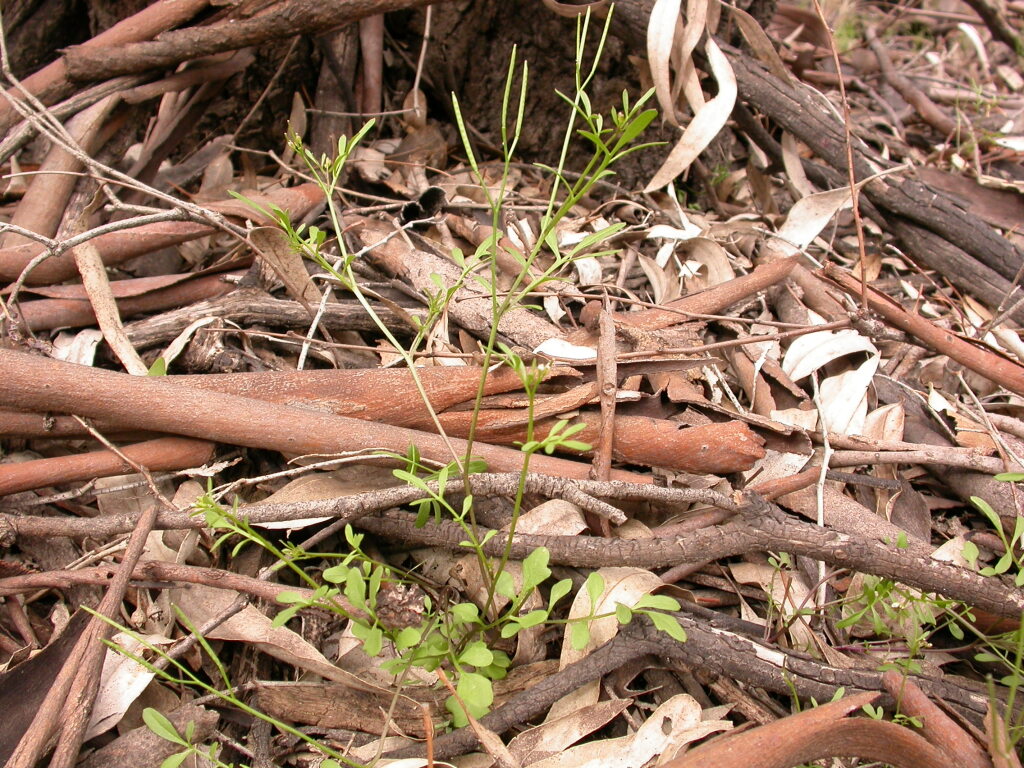Cardamine moirensis
I.Thomps.Glabrous taprooted annual, to 30 cm high; stems slender, erect to ascending. Leaves very thin; basal leaves forming a lax and generally non-persistent rosette, to c. 7 cm long, pinnate with 2–4 pairs of lateral pinnae, the terminal pinna ovate and trilobed; cauline leaves usually 3 or more, similar to basal leaves but shorter (mostly 2–4 cm long), and with pinnae becoming narrower, pinnae small, entire or with 1 or 2 lateral teeth. Racemes few-flowered; sepals 1.5–2 mm long; petals 2–3.5 mm long, white; mature style to 1 mm long. Fruits 1.5–3 cm long, c. 1.0 mm wide held erect to erecto-patent; pedicels 5–15 mm long; seeds 1.0–1.2 mm long. Flowers mostly winter–spring.
LoM, MuM, Wim, VVP, VRiv, MSB, RobP, MuF, GipP, HSF. Also SA, NSW. In Victoria, occurring in the north and west in seasonally wet areas.
Cardamine moirensis is an annual herb with thin leaves and slender, leafy stems. It appears closest in general appearance to C. lineariloba but has different leaf morphology. Previously included in C. paucijuga.
Thompson, I.R. (1996). Cardamine. In: Walsh, N.G.; Entwisle, T.J., Flora of Victoria Vol. 3, Dicotyledons Winteraceae to Myrtaceae, pp. 434–442. Inkata Press, Melbourne.
 Spinning
Spinning

